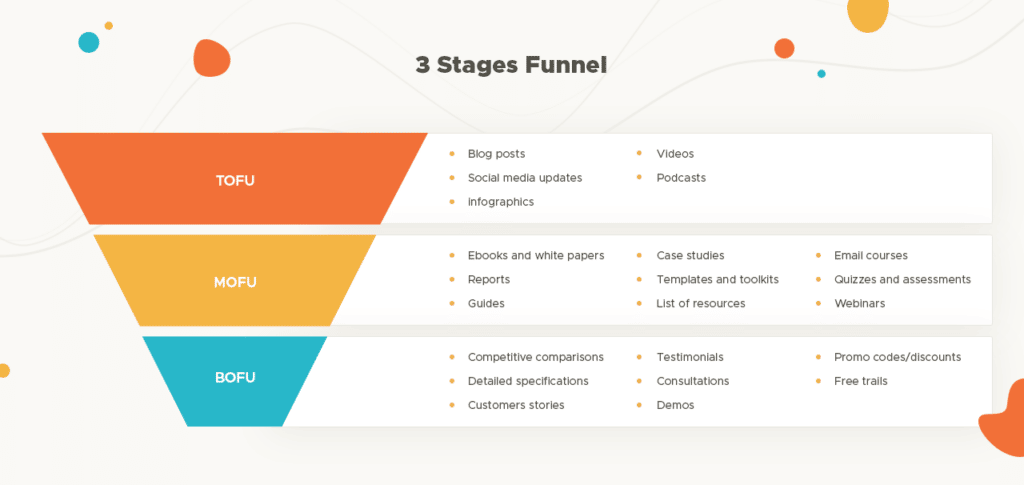Prospecting is probably one of the most challenging aspects of sales. It takes time to build out the right messaging and processes to ensure that you’re successful while hunting for new deals to fill the pipeline. More importantly, you need to figure out the step beyond that and close more deals, i.e. generate revenue — then repeat that process in order to be as effective and efficient as possible.
Truth be told, as a business owner myself, prospecting is one of the implementations I enjoy the least. I’m a marketer at heart, and the idea of having to do a cold outreach just makes me cringe. However, I know — as well as any B2B salesperson should — that marketing is a great way to get people in the door and attract the right people. But at some point, sales has to come in to build the relationships and eventually close the deal.
To further echo my stance on prospecting, here are a few stats to know right off the bat:
- More than 40% of salespeople say this is the most challenging part of the sales process, followed by closing (36%) and qualifying (22%). If you find prospecting to be the most difficult part of your job, you’re not alone.
- 19% of buyers want to connect with a salesperson during the awareness stage of their buying process, when they’re first learning about the product.
- 60% want to connect with sales during the consideration stage, after they’ve researched the options and come up with a shortlist.
- 20% want to talk during the decision stage, once they’ve decided which product to buy.
- It takes an average of 18 calls to actually connect with a buyer.
- Only 24% of sales emails are opened.
In today’s blog post, I’ll walk through the following:
- Instilling a follow-up process that will funnel more buyers in the door.
- Effectively leverage social selling.
- How email should be used to support your prospecting efforts, and much more.
Let’s get started…
Not all sales opportunities are created equal
It’s important to know that when it comes to selling and positioning your products/services in the right place to be seen by the right people, you have to be contextually relevant. In other words, the ginormous email blast or LinkedIn messages you keep sending out and not receiving any sort of response from is probably a bad sign.
There is a level of personalization that needs to be taken seriously. I know that may sound incredibly obvious, but many sales reps get caught up in the quantity game instead of really looking at the quality of leads that come in the door or that they go can after as the top priority.
To be more specific, here’s why personalization is so imperative to closing more deals:
- Businesses that use differentiation see substantially higher revenue growth.
- The average business sees a loss of 10% of its customers annually.
- 60% of customers will pay more for a better experience.
1. Follow up like you actually want to book a meeting
I’ve seen this happen over and over in the B2B enterprise world: you get a bunch of qualified leads in the door — meaning legit name, email, role, company, and need given — but then sales doesn’t follow up right away. So the more time that goes by, the lead goes from a hot lead to warm, and then cold. Then, sales blames marketing for not bringing in enough qualified leads and marketing blames sales for not following up.
Where’s the gap?
Certainly not in the finger-pointing game. Both teams have to work together to reduce the friction. In order to really get conversations going with the qualified leads, sales has to follow up right away. If there are too many leads, then marketing can decrease the throttle — but it’s crucial for closing more deals that sales follows up as soon as possible. I’m talking minutes here, not hours. In fact, there is a 10x drop in lead qualification when you wait longer than 5 minutes to respond, and a 400% decrease when you respond within 10 minutes versus 5 minutes.
Key takeaways here:
- Respond within 5 minutes that a qualified lead comes through.
- Your response should be personalized and contextually relevant.
- Log EVERYTHING into your CRM so you can track and measure activity.
- Don’t just defer to email to do it all. In fact, call within the first 5 minutes.

2. Implement lead scoring to further enable sales
Living in the digital age, there is simply no excuse not to leverage as many data-centric executions as you can to help make the necessary improvements to the overall business health, especially in sales.
One of the easiest things that sales can do is ensure that they (along with marketing) are implementing lead scoring. Lead scoring is a great way to see what’s working and what isn’t. You can flexibly make changes and also put some qualitative reasoning behind the quantitative parts.
In a previous blog post, How to Build a Killer Lead Scoring Model for Marketing and Sales, I highlighted the following:
Threshold
Establishing the right balance regarding your lead scoring threshold is pertinent to know when a lead is sales-ready. Having a threshold that is too low can have its drawbacks because leads will be qualified prematurely for sales. On the other hand, having too high of a threshold can also mean that qualified leads are sitting in the wrong queue too long and not being followed up promptly. There are several ways you can look at this, and I typically try to make it simple while also considering the buyer’s journey as well.
Here are two examples to consider:
- Content download → becomes MQL and is nurtured until it hits a threshold of 100 points. At that point, if the lead still hasn’t expressed interest in moving forward, find out why, and adjust points accordingly.
- Demo request → pushed straight to SQL for sales to follow up.
Moreover, you can also set rules around notifications for each threshold you do set up so that once a lead hits that number, you can look to gain more insight on why they haven’t moved ahead, what more they might be looking for, and what you may need to do on your end to make the purchase journey more attractive to prospective buyers.
Behavioral
With both implicit (content downloads, website visits, email click-throughs and opens, demo requests, etc.) and explicit (title, role, company name, industry, geographic location, etc.) data points that can be collected, you can easily narrow down your own criteria. Once you have these criteria in place, you can attach points based on behavioral actions that follow.

What behavioral lead scoring helps with is your ability to then customize their journey with your product/service — meaning that if a prospect downloads a white paper on “data security” and goes on to visit your product pages specifically about that, you can then put them into an automated workflow that includes content about that area.

Negative
Weeding out leads that don’t fall under the type of personas you are trying to reach is going to save you a ton of time and money. Here are some clear examples of leads that may not be a good fit:
- Come in through your careers page and peruse openings you have.
- You’re going after enterprise companies and the lead is a local small business owner.
- Anyone who unsubscribes from your email list.
- Not opening any emails.
- No revisits or any other action thereafter.
- Does not fit in the industry you service. There is such a thing as a “bad sale,” so don’t go chasing every dollar because you could eventually pay for it in the long-term, since they may constantly want your product to do something it does not.
Depreciation
Not every single lead that comes in is going to continue being active. For instance, if a lead comes in after downloading multiple content assets and then does nothing thereafter, it’s okay to depreciate their score. There’s no point in pushing a stagnant lead to buy from you because it’s already obvious by their lack of action that they are nowhere near becoming sales-ready.
Here are some criteria to consider:
- Once a lead becomes inactive for 30 days, they lose 50 points.
- If there is no activity after 90 days, they go back to zero.
To manage all of this lead scoring, you need a highly capable CRM platform. One of my favorites is Hubspot, because of its easy to use interface, scalability, and abundance of features. Through Hubspot, you can not only manage your leads, but also schedule social media posts, send emails, and manage customer service. And their CRM platform is free right now, so check them out today.
3. Social selling should be a top priority
Besides pushing out incredibly valuable content, it’s also important to be active on social networks that your target audience frequents. If you’re in the B2B enterprise space, being active on LinkedIn could be a huge win for you. Here are a few stats to know around social selling and how powerful it is if leveraged the right way:
- 76% of buyers are ready to have sales conversations on social media.
- According to LinkedIn, 62% of B2B customers respond to salespeople who connect by sharing content and insights that are relevant to the buyer.
- 81% of buyers are more likely to engage with brands that have a strong, cohesive, professional social media presence.
- Sales reps who were introduced by a mutual connection left a favorable impression with 87% of buyers surveyed by LinkedIn.
- Harvard Business Review reports 90% of B2B decision makers never respond to cold outreach.
- IDC found 75% of B2B buyers and 84% of C-level executives consult social media before making purchasing decisions.
- 92% of B2B customers are willing to engage with sales reps who have positioned themselves as an industry thought leader. This credibility is often attained by posting regularly to social media.
Per Hootsuite, “social selling is the art of using social media to find, connect with, understand, and nurture sales prospects. It’s the modern way to develop meaningful relationships with potential customers so you’re the first person or brand a prospect thinks of when they’re ready to buy. For many salespeople, it’s replaced the dreaded practice of cold calling.”
With that in mind, here are some clear tactical executions you can do right now:
- Connect and follow your target personas.
- Follow up with personalized messages.
- Reshare content that marketing develops, then tag relevant people.
- Comment and like relevant content.
- Join and be interactive in LinkedIn Groups.
- Send out LinkedIn inMail messages and make them personal. Don’t go for the sale right away. Instead, share valuable content and information.
4. Creatively use email to be helpful, not just to sell
I get it, the eagerness of hitting your sales quota and simply generating revenue is always top of mind and is probably what keeps you awake at night. However, one of the most effective ways you can use email to support your prospecting and follow up efforts is to be as helpful as possible.
What does this mean?
Leverage the content assets you have on hand, which can range from whitepapers, eBooks, webinars, tutorials, and educational blog posts. More specifically, you should treat email as an aligned effort to meet the buyers wherever they are in the buyer journey. Know that you can easily do this via lead scoring, as I mentioned before.

If you don’t have enough content assets on hand, create some as soon as possible. If you don’t have time to write and design them yourself, hiring the work out to a freelancer can help you get it done professionally and quickly. Check out Fiverr today to peruse their variety of skilled freelancers that can get your content turned around quickly. And Fiverr guarantees their work, so you don’t pay until you’re satisfied. Check out their prices here.
5. Track and measure for results
The only way to understand if specific sales activities are actually working is to make sure you are not only logging everything but also using automation — along with analytics — where you can. This not only holds everyone accountable, but it also gives you clarity around the initiatives that you need to improve on and the ones that you know are working with closing new deals.
Here are clear reasons that show how much the sales landscape has changed and why analytics are more important than ever:
- Sales teams are twice as likely (33%) to prioritize leads based on data analysis of “propensity to buy” rather than on intuition (16%).
- 50% of teams leverage data to produce timely, accurate forecasts.
- High-performing sales teams (the top 24% of more than 2,900 sales professionals surveyed) are 1.5 times more likely to base forecasts on data-driven insights.
- 75% of business buyers say that connected processes are very important to winning their business.
- 81% of sales reps believe it is important to have a connected view of data across the entire customer journey.
Pushing data-driven sales initiatives are going to help you figure out the best way to navigate channels that drive the most meaningful conversations, shorten the sales cycle, and even understand how to best respond to common objections.
Wrapping it up
One of the most amazing things about knowing which technologies and processes to adopt means that it’ll help your business grow. Sales isn’t just about making dials and creating the busy work that comes with prospecting and trying to close new deals; it is about finding the right avenues that will increase revenue, repeating the right processes, and yielding real results.
Finally, if you haven’t already, make sure you check out these blog posts to get more insight on setting your business up for success:
- How to Build a Killer Lead Scoring Model for Marketing and Sales
- What is Sales Enablement and How to Do It
- 5 Must-Haves to Skyrocket Leads and Sales
Disclosure: Please note that some of the links above are affiliate links. I only recommend products and services that I use and stand behind, and if you decide to try them, I will earn a commission at no cost to you. Doing so helps me run this blog and provide free content for you, my readers.





